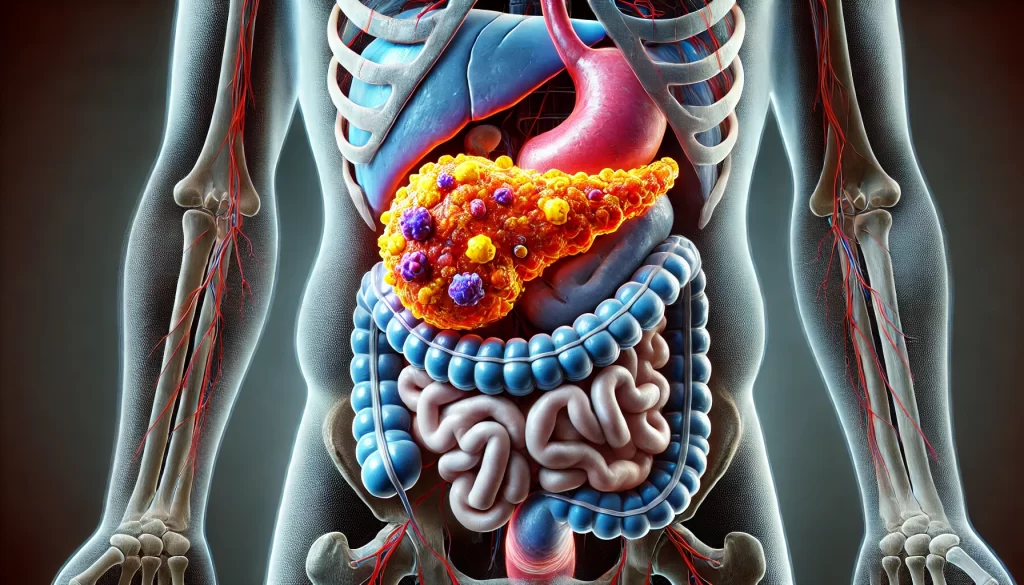Acute Cholecystitis
What is Acute Cholecystitis?
Acute cholecystitis refers to the sudden inflammation of the gallbladder, a small organ that stores bile produced by the liver. This condition often requires hospital treatment due to its potential severity. Prompt diagnosis and management are crucial to prevent complications.
Symptoms of Acute Cholecystitis
The primary symptom of acute cholecystitis is a sudden, intense pain in the upper right abdomen that may radiate to the right shoulder. Unlike other abdominal pains, this discomfort usually persists and does not go away within a few hours. Additional symptoms may include:
- Tenderness in the upper right abdomen, worsening with deep breaths.
- Fever (high temperature).
- Nausea and vomiting.
- Sweating.
- Loss of appetite.
- Jaundice (yellowing of the skin and whites of the eyes).
- Abdominal bulge.
When to Seek Medical Help
Contact your GP if you experience sudden, severe abdominal pain lasting more than a few hours or if symptoms like fever and jaundice appear. For urgent situations, call 111 or visit the hospital immediately, as untreated acute cholecystitis can lead to serious complications.
Causes of Acute Cholecystitis
There are two primary types of acute cholecystitis:
Calculous Cholecystitis (Gallstone-Related)
This is the most common form, accounting for around 95% of cases. It occurs when the cystic duct (main opening to the gallbladder) is blocked by:- Gallstones.
- Biliary sludge (a mixture of bile, cholesterol crystals, and salts).
The blockage leads to bile buildup, causing pressure, inflammation, and sometimes infection in the gallbladder.
Acalculous Cholecystitis (Non-Gallstone-Related)
Less common but typically more severe, this form occurs without gallstones and is often linked to:- Serious illness or infection.
- Major surgery.
- Severe trauma or burns.
- Sepsis (blood poisoning).
- Malnutrition or AIDS.
Risk Factors
Gallstones are a common cause of acute cholecystitis, affecting 10-15% of adults in the UK. Most people with gallstones remain asymptomatic, but some experience biliary colic (infrequent episodes of pain) or develop acute cholecystitis.
Diagnosing Acute Cholecystitis
Diagnosis often involves:
Physical Examination
A simple test called Murphy’s sign is used, where your GP presses on your abdomen just below the rib cage while you take a deep breath. If you experience pain during this maneuver, it suggests gallbladder inflammation.Blood Tests
These tests help detect signs of inflammation or infection.Imaging Tests
- Ultrasound scan: Used to identify gallstones and inflammation.
- CT scan, X-ray, or MRI: May be used for more detailed imaging if needed.
Treatment of Acute Cholecystitis
Hospitalization is often necessary for acute cholecystitis. Treatment typically includes:
Initial Management
- Fasting: No food or drinks to rest the gallbladder.
- Intravenous Fluids: To prevent dehydration.
- Pain Relief: Medications to control pain.
- Antibiotics: If infection is suspected, antibiotics may be administered for up to a week.
Note: In many cases, gallstones causing the inflammation may return to the gallbladder, and the inflammation can subside with initial treatment.
Surgery
To prevent recurrence and complications, gallbladder removal (cholecystectomy) is often recommended:
- Laparoscopic Cholecystectomy (Keyhole Surgery): A minimally invasive procedure using small incisions.
- Open Cholecystectomy: Performed through a single, larger incision.
Alternative Procedure
For patients unable to undergo surgery, a percutaneous cholecystostomy may be performed, involving a needle insertion to drain fluid buildup in the gallbladder.
Complications of Untreated Acute Cholecystitis
Without timely treatment, acute cholecystitis can lead to:
- Gangrenous Cholecystitis: Tissue death in the gallbladder, causing a severe infection.
- Perforated Gallbladder: Rupture of the gallbladder, leading to peritonitis (abdominal infection) or abscess formation.
In around 1 in 5 cases, emergency surgery is needed to address these complications.
Preventing Acute Cholecystitis
While complete prevention isn’t always possible, you can reduce your risk by lowering the chances of developing gallstones through:
- Healthy Diet: Limit high-cholesterol foods.
- Weight Management: Avoid rapid weight loss; aim for gradual weight reduction through a balanced diet and regular exercise.







